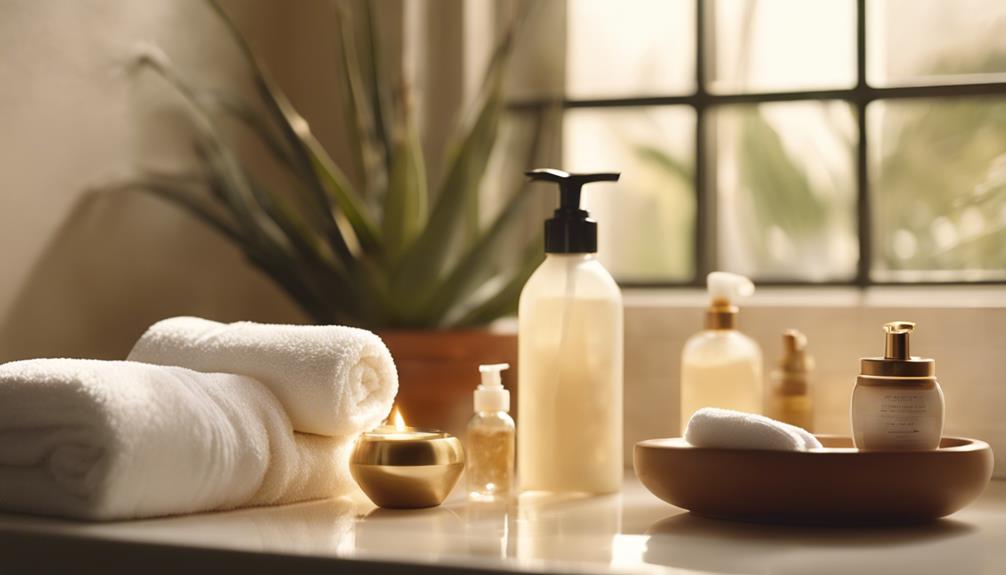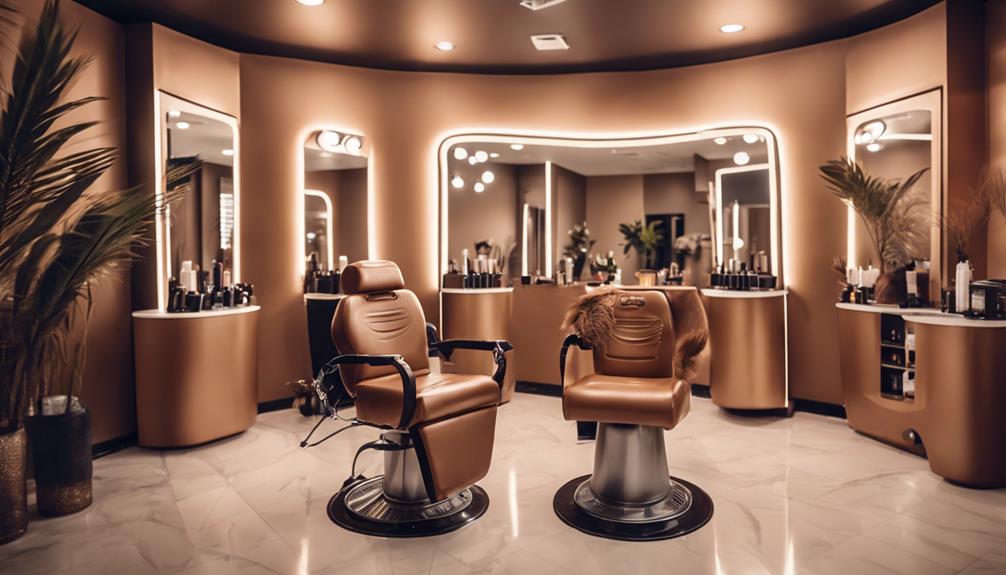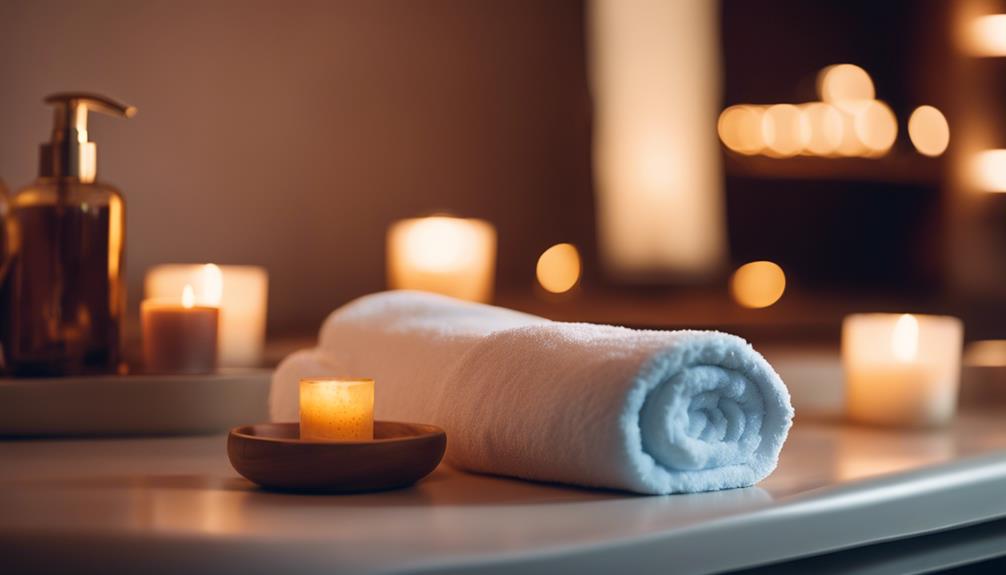Wanna stay golden? Then keeping your tanning beds spotless is key! Nothing says “I'm fabulous” like a clean, germ-free spot to get your glow on. A clean bed makes your tanning experience so much better and boosts your confidence—who doesn't love that? Plus, those shiny beds reflect a salon that really cares about your health. Remember to pre-tan prep with exfoliation and moisturization, and protect those pretty peepers with UV goggles! Oh, and don't forget to take care of your tan afterward. Stick around, and you just might discover even more tips for that perfect bronze!
Key Takeaways
- Regular cleaning of tanning beds prevents the spread of germs, ensuring a safe and enjoyable tanning experience.
- Use disposable barriers and effective sanitization practices to maintain a hygienic environment for clients.
- Inspect and maintain tanning equipment regularly to enhance longevity and provide a consistent glow.
- Proper eye protection with FDA-approved goggles is essential to safeguard against harmful UV rays during tanning.
Importance of Clean Tanning Beds
Clean tanning beds are essential for ensuring your safety and satisfaction, as they prevent the spread of germs and enhance your tanning experience.
Imagine lying down on a bed that feels fresh and clean—ah, bliss! You wouldn't want to soak up those rays while worrying about who tanned before you, right? A spotless bed boosts your confidence and makes every session feel special.
Plus, a clean salon shows that your health matters to the staff. Who wouldn't want to tan in a place that cares?
Routine Inspection and Maintenance

Regularly inspecting and maintaining tanning beds is essential for ensuring a safe and enjoyable experience for every customer.
Imagine settling in for a nice tan, only to discover a sticky bed or worse—a scratchy surface! Yikes! To avoid that, check the beds for grime, dust, or any funky smells. You wouldn't want to relax on something that feels like it just survived a food fight, right?
Keep an eye on those acrylic surfaces for scratches, too, since they can mess with your glow. And don't forget to inspect the bulbs and goggles—cleaning these regularly extends the life of your equipment.
A little routine care goes a long way, ensuring everyone leaves glowing, happy, and ready for their next session!
Effective Sanitization Practices

Maintaining effective sanitization practices is essential for ensuring a safe and hygienic tanning experience for every client. You want to feel relaxed, not worried about who tanned before you, right? So, always check that the tanning bed is spotless!
Use disposable stickers and towels to create a barrier, then apply a good sanitizer on all surfaces. Don't forget those hard-to-reach spots! Let the sanitizer sit for a few minutes to really kick those germs to the curb.
A microfiber cloth and soft brush can help you clean those tricky areas. Remember, changing barriers after each session keeps things fresh.
With these simple steps, you'll enjoy a clean tanning environment that'll leave you glowing—inside and out!
Pre-Tanning Preparation Tips

Before you hit the tanning bed, make sure to exfoliate your skin 24 hours in advance to achieve an even tan. Trust me, your skin will thank you! Here are some quick tips to get you prepped:
| Tip | Why It Matters |
|---|---|
| Exfoliate | Removes dead skin for a smooth tan |
| Moisturize | Keeps your skin hydrated |
| Skip heavy lotions | Prevents streaky results |
| Shave or wax | Reduces irritation |
| Test your skin | Avoids surprises during tanning |
Post-Tan Care Essentials

Caring for your skin after tanning is essential to prolonging your glow and ensuring an even finish. You've worked hard to get that perfect tan, so let's keep it looking fabulous!
Here are some post-tan care essentials to take into account:
- Moisturize daily: Hydrated skin holds onto that glow much longer!
- Avoid hot showers: They can fade your tan faster than you can say “sun-kissed.”
- Skip exfoliating for a bit: Give your skin a break; let that tan settle in.
Importance of Eye Protection

Wearing proper eye protection during tanning sessions is essential to shield your eyes from harmful UV rays that can cause serious damage. You might think, “I'm just tanning for a bit!” but trust me, those rays don't play around. Goggles aren't just a fashion statement; they block harmful UV rays and keep your peepers safe.
Here's a quick look at what you should know:
| Goggle Features | Why They Matter |
|---|---|
| 100% UV Protection | Keeps those harmful rays away! |
| Snug Fit | Prevents light leaks—no squinting! |
| FDA Approval | They're safe and reliable! |
| Comfortable Padding | No irritation during your tan! |
| Stylish Designs | Who says safety can't look good? |
Alternatives to Tanning Beds

Exploring alternatives to tanning beds can help you achieve a sun-kissed glow without the risks associated with UV exposure. Plus, you can skip the awkward tan lines! Here are some fun options to take into account:
- Sunless tanning lotions: These are easy to apply and give you that golden hue without any harmful rays.
- Spray tans: Perfect for a quick and even glow; just be sure to wear loose clothes afterward!
- Tanning mousses: They're lightweight and dry quickly, so you can get on with your day without sticky residue.
Frequently Asked Questions
How Often Should I Tan for Optimal Results?
To achieve ideal results, you should tan 1-3 times a week, depending on your skin type and desired shade. Always listen to your skin's response and adjust your frequency to avoid overexposure.
Can I Share Tanning Beds With Friends?
Imagine sharing a tanning bed with a friend after a workout. It's tempting, but it's not recommended. Tanning beds can harbor bacteria, so it's safer to stick to individual sessions for hygiene and health reasons.
What Should I Wear While Tanning?
When tanning, wear minimal clothing like a swimsuit or loose-fitting garments to avoid tan lines. Don't forget protective goggles to shield your eyes from UV rays, ensuring a safe and enjoyable tanning experience.
How Can I Tell if a Tanning Bed Is Safe?
You'd think a tanning bed's safety is as obvious as a summer's day, but check for cleanliness, intact surfaces, and proper maintenance. Trust your instincts—if it looks shady, it probably isn't safe!
Are There Age Restrictions for Using Tanning Beds?
Yes, most tanning salons impose age restrictions for tanning bed use, typically requiring users to be at least 18. It's important to check local laws and individual salon policies before tanning to guarantee compliance.
Conclusion
So, there you have it! Keeping those tanning beds spotless really matters for your glow-up and your health.
It's funny how a little cleanliness can make such a big difference, right?
Remember to prep your skin and protect your eyes—your future self will thank you!
And if you ever feel like switching things up, there are plenty of alternatives out there.
Now go get that golden tan, and let's shine together!










